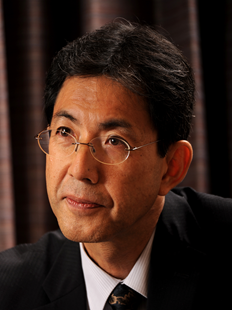Abstract
Tissue engineering is defined as a biomaterial technology indispensable for regenerative medicine of an advanced medical strategy. The regenerative medicine can be achieved only by the promotion of natural self-healing potential of patients. To this end, it is practically indispensable to manipulate the inherent ability of cells for their proliferation and differentiation which physiologically contributes to the self-healing potential. As one trial to achieve cell-based tissue regeneration, cells present in the body should be activated to promote their regeneration potential. Biomaterial technology plays an essential role in creating the local environment which allows cells to activate their potentials of tissue regeneration. If a bioactive drug is supplied to cells at the right site, the right time period or the suitable concentration, their potential will be enhanced to naturally induce cell-based tissue regeneration.
Biodegradable hydrogels are available for the controlled release of growth factors, chemokines, genes, and low-molecular-weight drugs to succeed in cells activation for regeneration therapy of various tissues. The hydrogel system can not only release one type of drug, but also two types of drugs in different concentrations or time profiles. For example, the controlled release of one drug can enhance the in vivo recruitment of key cells, followed by the local functional activation of cells recruited by another drug released for an enhanced cell-based tissue regeneration. Inflammation is one of the essential host responses to pathologically modify the process of tissue regeneration. Tissue regeneration was naturally promoted by positively regulating the inflammation process through the local release of an anti-inflammatory drug. An appropriate regulation of inflammation further enhanced the therapeutic efficacy of tissue regeneration which is induced by the biomaterial technology. This paper discusses about significance of biomaterial technology in regenerative medicine.
Yasuhiko Tabata, PhD
Department of Plastic and Reconstructive Surgery
Graduate School of Medicine, Kyoto University

Yasuhiko Tabata, PhD
Dr. Yasuhiko Tabata is the Professor Emeritus, Kyoto University and a Special Professor (full-time) of Tabata’s group ”Cell Biotechnology”, Department of Plastic and Reconstructive Surgery, Graduate School of Medicine, Kyoto University, and guest professors at the Graduate School of Medicine, Dentistry, Pharmaceutical Sciences, and Engineering of 17 different universities. He received his BD in Polymer Chemistry (1981), Ph.D. (1988) in Technology, D.Med.Sc. (2002), and D.Pharm. (2003) all at Kyoto University. He was a Visiting Scientist at the MIT (Professor Robert Langer) (1991-92). He has published 1,732 scientific papers including 146 book chapters and review articles and has 130 patents. He received the Young Investigator Award (1990), the Scientific Award from the Japanese Society for Biomaterials (2002), the Scientific Award from the Japan Society of Drug Delivery System (2011), Chandra P. Sharma Award of the International Society of Biomaterials & Artificial Organs (2011), the Scientific Award from the Japanese Society for Regenerative Medicine (2014), Merit Award Winners for Industry-Academia-Government Collaboration, President of Science Council of Japan Award (2016), Outstanding Scientist Award of the Tissue Engineering and Regenerative Medicine International Society - Asian-Pacific Chapter (TERMIS-AP) (2018), TERMIS-AP Excellent Achievement Award (2022), and several awards.
Dr. Tabata is the president of the Japan Society of Drug Delivery System (JSDDS), the board member of the Japanese Society of Regenerative Medicine (JSRM), the Japanese Society for Biomaterials (JSB), and TERMIS-AP or the councilor of several academic societies. He is a fellow of WBS, TERMIS, CRS) or the New York Academy of Science, AIMBE, and FTERM.
His research is very interdisciplinary in nature and brings together the fields of polymer chemistry, pharmaceutical science, biology, and basic and clinical medicines. His research keywords are biomaterials, drug delivery system (DDS), tissue engineering, regenerative medicine, stem cell technology, and medical diagnostics.
